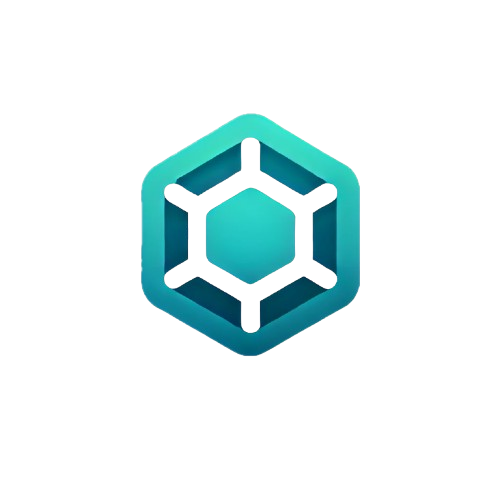· Sweady Team · Developer Productivity · 5 min read
Top Slack Automation Tips to Streamline Developer Collaboration Now
Explore practical Slack automation strategies that can transform your team's collaboration. Learn how integrating Sweady into your GitHub workflows speeds up code reviews, enhances DevOps efficiency, and boosts developer productivity.
this section is constant and should not be updated author: ‘Sweady Team’
Top Slack Automation Tips to Streamline Developer Collaboration Now
In today’s fast-paced software development environment, effective communication and seamless collaboration are paramount. With global teams working across different time zones and increasing code complexity, tools like Slack have become integral to streamline communication. By integrating automation with Slack, development teams can significantly boost productivity and improve collaboration.
In this blog post, we’ll explore some of the top Slack automation tips that can optimize your developer workflows, making your team more efficient and agile.
Why Automate Slack?
Before diving into the tips, let’s take a moment to understand why Slack automation is beneficial for development teams:
- Efficiency: Automate repeatable tasks to free up developers for more critical work.
- Consistency: Ensure that key information and updates are consistently delivered to the right people.
- Proactive Alerts: Receive instant alerts about code reviews, CI/CD pipeline statuses, and more.
- Enhanced Focus: Reduce distraction by streamlining communication and prioritizing urgent notifications.
- Improved Collaboration: Foster better team interaction and quicker feedback loops.
1. Connect Slack with GitHub for Seamless Code Review
One of the most effective ways to streamline your code review process is by integrating GitHub with Slack. Here’s how you can set it up:
GitHub App for Slack: Install the GitHub app on your Slack workspace. This app sends notifications directly to Slack when code is committed, pull requests are opened or merged, and when issues are updated. Automating these notifications ensures your team never misses a beat.
Custom Slack Actions: Use GitHub Actions to automate actions like sending a direct message to a reviewer on Slack when a pull request is assigned to them.
Dedicated Channels: Create dedicated Slack channels for each repository or feature branch. This allows focused discussions around specific code segments without cluttering general channels.
Example Code Snippet for GitHub Actions:
name: Notify on PR Opened
on:
pull_request:
types: [opened]
jobs:
notify:
runs-on: ubuntu-latest
steps:
- name: Send Slack notification
uses: rtCamp/action-slack-notify@v2
env:
SLACK_WEBHOOK: ${{ secrets.SLACK_WEBHOOK }}
with:
args: "New pull request opened: ${{ github.event.pull_request.html_url }}"2. Set Up Daily Stand-Up Reminders
Daily stand-ups are a staple of Agile teams, but coordinating them across different time zones can be challenging. Automate your reminders:
Slackbot Reminders: Use Slackbot to set daily reminders for stand-ups. Customize it to accommodate different time zones and ensure everyone is on the same page.
Interactive Surveys: Use tools like Polly or Geekbot to automate daily stand-up surveys directly in Slack. These bots can ask team members what they accomplished yesterday, what they’ll work on today, and any blockers they face.
Scheduled Messages: Utilize Slack’s scheduled message feature to send out automated prompts for stand-ups. This ensures consistency even when you’re not around to remind the team manually.
3. Leverage Workflows and Apps for Incident Management
Quick, coordinated responses to incidents are critical. Set up Slack workflows for incident management:
Creating Incident Channels: Automatically create incident-specific channels whenever a new incident is reported in your project management tool. Add relevant stakeholders to the channel instantly.
Integrations with Monitoring Tools: Integrate Slack with monitoring tools such as Datadog, Sentry, or New Relic. Receive real-time alerts and status updates directly in Slack channels dedicated to those incidents.
Automated Status Reports: Use Slack workflow builder or third-party tools to automate status reports that are shared with both internal teams and external stakeholders.
4. Implement Automations for Developer Onboarding
Onboarding new developers seamlessly can set them up for success from day one. Use Slack automation to streamline the process:
Welcome Messages: Automate welcome messages to introduce new team members to key information such as documentation, project boards, and team contacts.
Resource Sharing: Use a bot to share important resources, like the team’s coding standards, CI/CD pipelines, and other onboarding materials.
Scheduled Check-ins: Schedule automated Slack check-ins to gather feedback from newcomers about their onboarding experiences and address any issues they might face.
5. Use Slack Commands to Automate Routine Tasks
Slack commands can automate routine tasks and improve the daily workflow of your development team:
Custom Slash Commands: Create custom slash commands for frequent tasks, such as
/deployto trigger a deployment script or/build-statusto fetch the latest CI/CD status.Channel Management: Use commands to automatically archive inactive channels or retrieve relevant project channels quickly.
Fetch Data: Set up commands to query project databases, retrieve logs, or fetch bug statuses without leaving the Slack environment.
Conclusion
Automation is a powerful tool that can transform how developers collaborate and communicate. By leveraging Slack with automation, your team can achieve greater efficiency, minimize delays, and deliver higher-quality code faster. Implementing these tips will not only save time but also enhance your development team’s ability to collaborate effectively in a remote or distributed setting.
Remember, the key to successful automation lies in continuous evaluation and iteration. Keep assessing the effectiveness of your automated workflows and be open to adopting new tools and methods as your team evolves.
Explore the potential of Slack automation to elevate your team’s collaboration dynamics today. For more tips and insights, keep visiting our blog at sweady.co.
Your team’s success is just a few automations away. Happy collaborating! 🎉 If you’re intrigued by the potential of Slack automations to enhance your development team’s workflow, you might want to dive deeper into how seamless integrations can revolutionize your team’s productivity. Check out our blog post on Slack Channels for Every PR. It explores how dedicated Slack channels for pull requests can refine your code review processes, keep communications laser-focused, and reduce development bottlenecks. Happy reading!
 Sweady
Sweady